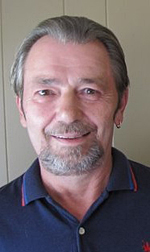

If you are up very early Saturday morning, December 10 and if the sky to the west is clear, look for a total eclipse of the Moon. The full Moon will be going down in the northwest just as the Sun rises in the southeast. Because the Sun, Earth and Moon are perfectly aligned on December 10, the Moon will set precisely as the Sun rises at a point directly opposite from the setting Moon. If you were at the moon, looking back at Earth, you’d see a total eclipse of the sun.
In the northern hemisphere we often call this particular full Moon the Long Night Moon since this is the closest full Moon to the December 21 Solstice.
On the early morning of December 10, the full Moon will slide thru the Earth‚s shadow causing a total eclipse of the Moon for 52 minutes. In western BC, the Moon will start to ‘disappear’ around 4:45 am PST with the total eclipse occurring from 6:05 to 6:57. The totally eclipsed Moon will be visible low in the northwest as dawn brightens the sky. This may be a good photo opportunity!
In a lunar eclipse, Earth’s shadow falls on the moon’s face. For about an hour, it looks as if a progressively bigger bite is being taken out of the moon. When the moon is completely submerged in the shadow, the total part of the eclipse begins. The moon often turns blood red due to some sunlight filtering through Earth’s atmosphere into the shadow on the moon.
Clear Skies!
Larry Pawlitsky is a Revelstoke resident and an avid amateur astronomer



